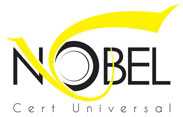ISO 16817 defines general principles for the design of building indoor environment and helps the main participants in the design process to ensure an indoor environment of the quality required for users.
The purpose of this document is to provide design team members with a design process for the indoor visual environment to aid provision of, in a sustainable approach, required visual comfort, physiological effects of light and energy performance of buildings. Visual comfort does not necessarily only provide a suitable lighting for executing a task. For example, a window has at least two functions: to facilitate the entry of daylight and to provide a view.
The design of an indoor visual environment of the required quality for users takes into account human needs that include elements linked to performance, visual comfort, health, safety and well-being.
Concerning research in illuminating and lighting, work by the International Commission on Illumination (CIE) should be consulted. The existing CIE and CEN standards are used and any new work is performed in close coordination with CIE and CEN.
This document
- — provides a framework for taking into consideration various parameters and criteria that influence the quality of the indoor visual environment,
- — is prepared for design teams (architects and engineers), as well as building clients, contractors, government officials, and academic staff,
- — is aimed at assisting these groups in applying an effective design process in the pursuit of an indoor visual environment of the required quality for the users,
- — incorporates sustainability considerations, and
- — is prepared on the basis of the following fundamental ideas:
- — it addresses the standardization of a design process elaborated through a systemic approach, a system of tasks that are structured together;
- — it is a guideline which invites designers to follow an iterative and progressive approach, to make choices and take compromise solutions according to the goals of the client, to the constraints and the opportunities linked to the building site, in relation to the main areas of work covered by ISO/TC 205;
- — it allows the performance level or values to be established by the programme and/or applicable regulation.

